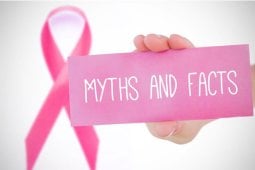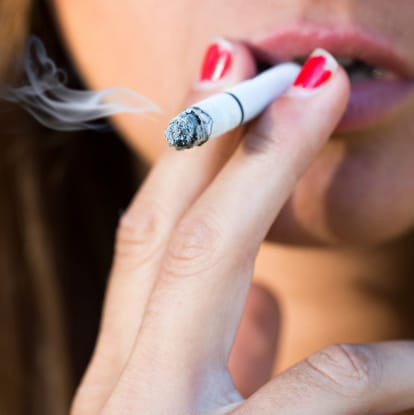Categories
- Bariatric Surgery (11)
- Black Fungus (5)
- Bone Marrow transplant (3)
- Brain Tumor Surgery Navigation Technology (20)
- Cardiac Surgery (66)
- Cardiology (97)
- Computer navigation technology for joint replacements (20)
- Covid Vaccination (17)
- Critical Care (2)
- Dental (19)
- Dermatology (31)
- Dialysis Support Group - “UTSAAH” (11)
- Dietitian (33)
- Emergency Medicine (4)
- Emotional Health (11)
- Endocrinology (33)
- ENT (20)
- Gastroenterology and GI Surgery (53)
- General and Laparoscopic Surgery (21)
- General Surgery (4)
- Gynecology & Obstetrics (183)
- Hematology (20)
- Internal Medicine (294)
- Kidney Transplant (50)
- Kidney Transplantation (20)
- Lung Cancer (8)
- Minimal Invasive Surgery (1)
- Mother & Child (20)
- mucormycosis (5)
- Nephrology (61)
- Neurology (147)
- Neurosurgery (68)
- Nutrition and Dietetics (107)
- Omicron Variant (1)
- Oncology (288)
- Ophthalmology (10)
- Orthopaedics & Joint Replacement (86)
- Paediatrics (59)
- Pediatric Nephrology (3)
- Physiotherapy (5)
- Plastic & Reconstructive Surgery (6)
- Psychiatry and Psychology (90)
- Psychologist (28)
- Pulmonology (72)
- Rheumatology (13)
- Spine Services (21)
- Transradial Angioplasty (16)
- Urology (84)
Query Form
Posted on Apr 19, 2022
The Breast Cancer Myths
It is important that one is aware of the breast cancer myths as they end up playing an important role in a woman’s life. Given below are some major aspects that are myths in the minds of women.
- Breast lump means Cancer: Some studies estimate that as many as 80% of breast lumps are benign. Please also note that all lumps may not indicate cancers. Benign lumps include fibroadenomas, fibrocystic disease, cysts, etc. Women are encouraged to report any changes in the breast or lump to doctor for early diagnosis. You may require mammogram, ultrasound, or biopsy to determine whether a lump is cancerous.
- Only older patients get Breast Cancer: In India, 25 years back, out of every 100 breast cancer patients, 69% of the patients were above 50 years of age. Presently, 4% are in 20 to 30 yrs age group, 16% are in 30 to 40, 28% are in 40 to 50 age group. So, almost 48% patients are below 50. An increasing numbers of patients are in the 25 to 40 years of age, and this definitely is a very disturbing trend.
- Deodorant or antiperpirant causes Breast Cancer: There is no conclusive evidence to show that deodorant or antiperpirant causes breast cancer. Parabens, used as preservatives in some antiperspirants, have weak estrogen-like properties, but the study in question made no cause-and-effect connection between parabens and breast cancer, nor did it conclusively identify the source of the parabens found in tumors. More study is needed.
- Men do not get Breast Cancer: According to studies, one in 30 girls born in India may develop breast cancer during her lifetime. But at same time, one in 400 men also develop the disease. In the US, over 2,000 men were affected in 2012. Generally, men with breast cancer have lower survival rates because the disease spreads rapidly due to scanty tissue in the breast area. Breast cancer in men is usually detected as a hard lump underneath the nipple and areola. While 83% women are likely to be alive five years after early-stage diagnosis and treatment, the percentage would be 73% for men.”

- Most Breast Cancers are Hereditary: The majority of breast cancers are not caused by inherited gene mutations, and only 5-10% of breast cancer is associated with BRCA1 & BRCA2. The other 90% are largely due lifestyle and environmental factors.
- A Mastectomy is the Best Therapy: breast conservation surgery( lumpectomy with axillary dissection/ sentinel lymph node biopsy and radiation) is as effective as mastectomy. Clinical trials have shown that mastectomy and lumpectomy with radiation have the same result for mortality in most instances.There are issues with both treatments, and patients need to be informed to make the right decision for them.
- Breast implants can raise your Cancer Risk: Women with breast implants are at no greater risk of getting breast cancer. Standard mammograms may not always work on these women, however, additional X-rays, ultrasound or MRI are sometimes required to fully examine breast tissue.
- Small-breasted women have less chance of getting Breast Cancer: There’s no connection between the size of the breasts and risk of getting breast cancer. Very large breasts may be harder to examine than small breasts, with clinical breast exams—and even mammograms and MRIs—more difficult to conduct. But all women, regardless of breast size, should commit to routine screenings and checkups.
- Since my menstrual periods have not begun again and I am taking Tamoxifen, I cannot get Pregnant: Even if your periods have not returned or they are irregular, tamoxifen does not protect you from getting pregnant. Tamoxifen has the potential to harm the fetus so while taking tamoxifen, non-hormonal form of birth control should be practiced.
- If you have a family history of Breast Cancer, you are likely to develop Breast Cancer, too: While women who have a family history of breast cancer are in a higher risk group, most women who have breast cancer have no family history. Statistically only about 10% of individuals diagnosed with breast cancer have a family history of this disease. If you have a first degree relative with breast cancer who developed breast cancer below the age of 50, you should consider some form of regular diagnostic breast imaging starting 10 years before the age of your relative’s diagnosis. If you have a second degree relative with breast cancer your risk increases slightly.



